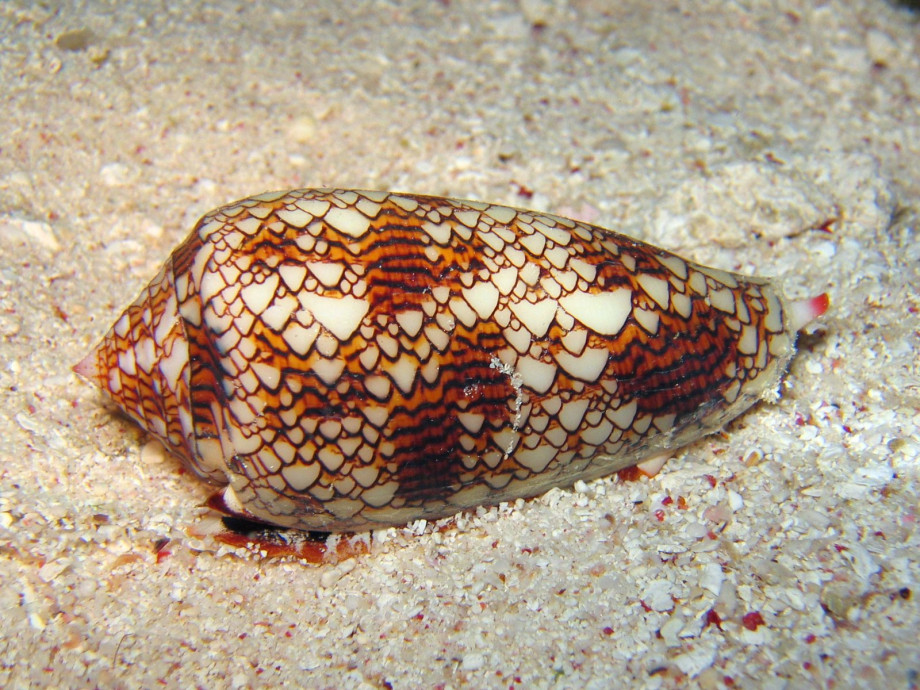Solutions to the problems we face can come from the strangest of places. The natural world has created an incredible array of molecules and proteins, some of which we can use to our advantage to reduce suffering and improve human life.
Sufferers of chronic pain, a nervous system disorder with few effective treatments, know the debilitating consequences of the illness. The treatments for chronic pain that we do have tend to be less directed than we would want: drugs that activate a wide range of receptors in the brain instead of just the few specific ones being targeted. Each receptor subtype has a different role, and off-target effects on the wrong receptor subtype can cause serious problems.
If we could find or create larger and more carefully shaped drug molecules, they would be able to selectively bind only to targeted receptors. Off-target activations of other receptors would be eliminated. To find suitable molecules, researchers have turned to, of all things, marine cone snails, and in particular their venom. Conotoxins, the compounds found in cone snail venom, are a growing source of interest for novel pain relief treatments.
Dr Andrew Hung from RMIT University is conducting detailed molecular dynamics simulations on NCI’s Gadi supercomputer to learn about exactly how conotoxins interact with target receptors in the brain. Using a large number of Gadi nodes to simulate many possible toxins in combination with different receptor subtypes, the research team has been able to make predictions tested and validated by experimental collaborators.
Dr Hung says, “Gadi allows us to simulate the movements of our systems for long enough to get a more accurate idea of how a protein really moves. It’s like a Bruce Lee movie: if you only see the opening credits, Bruce Lee doesn’t seem to do much. But watch the whole movie, and his impressive range of movements become obvious.”

A protein’s movement is closely tied to its function, but the effects that cause the movements might not be immediately apparent. In some cases, a drug might only slightly alter a protein’s structure – and thus its movement – through a series of subtle steps that take some time to come about. That’s why modelling the protein and drug interactions for an extended period of time using powerful HPC systems is so important.The Gadi supercomputer allows researchers to model complex molecular interactions in exquisite detail.
Other future therapies may also come from predatory animals, whose venom contain toxins which act on membrane proteinsin a similar way to conotoxins. Dr Hung says, “I’ve grown accustomed to seeing these compounds, but occasionally I am reminded of the wonder that nature contains such molecules, and that we are in a position today to study them with computers. Nature is in a constant arms race, but some of these ‘weapons’ can be used to improve lives and Gadi is crucial to this work.”
